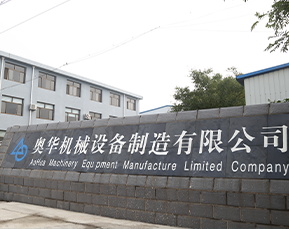 Afrikaans
Afrikaans  Albanian
Albanian  Amharic
Amharic  Arabic
Arabic  Armenian
Armenian  Azerbaijani
Azerbaijani  Basque
Basque  Belarusian
Belarusian  Bengali
Bengali  Bosnian
Bosnian  Bulgarian
Bulgarian  Catalan
Catalan  Cebuano
Cebuano  Corsican
Corsican  Croatian
Croatian  Czech
Czech  Danish
Danish  Dutch
Dutch  English
English  Esperanto
Esperanto  Estonian
Estonian  Finnish
Finnish  French
French  Frisian
Frisian  Galician
Galician  Georgian
Georgian  German
German  Greek
Greek  Gujarati
Gujarati  Haitian Creole
Haitian Creole  hausa
hausa  hawaiian
hawaiian  Hebrew
Hebrew  Hindi
Hindi  Miao
Miao  Hungarian
Hungarian  Icelandic
Icelandic  igbo
igbo  Indonesian
Indonesian  irish
irish  Italian
Italian  Japanese
Japanese  Javanese
Javanese  Kannada
Kannada  kazakh
kazakh  Khmer
Khmer  Rwandese
Rwandese  Korean
Korean  Kurdish
Kurdish  Kyrgyz
Kyrgyz  Lao
Lao  Latin
Latin  Latvian
Latvian  Lithuanian
Lithuanian  Luxembourgish
Luxembourgish  Macedonian
Macedonian  Malgashi
Malgashi  Malay
Malay  Malayalam
Malayalam  Maltese
Maltese  Maori
Maori  Marathi
Marathi  Mongolian
Mongolian  Myanmar
Myanmar  Nepali
Nepali  Norwegian
Norwegian  Norwegian
Norwegian  Occitan
Occitan  Pashto
Pashto  Persian
Persian  Polish
Polish  Portuguese
Portuguese  Punjabi
Punjabi  Romanian
Romanian  Russian
Russian  Samoan
Samoan  Scottish Gaelic
Scottish Gaelic  Serbian
Serbian  Sesotho
Sesotho  Shona
Shona  Sindhi
Sindhi  Sinhala
Sinhala  Slovak
Slovak  Slovenian
Slovenian  Somali
Somali  Spanish
Spanish  Sundanese
Sundanese  Swahili
Swahili  Swedish
Swedish  Tagalog
Tagalog  Tajik
Tajik  Tamil
Tamil  Tatar
Tatar  Telugu
Telugu  Thai
Thai  Turkish
Turkish  Turkmen
Turkmen  Ukrainian
Ukrainian  Urdu
Urdu  Uighur
Uighur  Uzbek
Uzbek  Vietnamese
Vietnamese  Welsh
Welsh  Bantu
Bantu  Yiddish
Yiddish  Yoruba
Yoruba  Zulu
Zulu tail pulley
Understanding the Tail Pulley A Key Component in Conveyor Systems
In the realm of material handling and mechanized transport, the tail pulley plays a crucial role in the efficiency and effectiveness of conveyor systems. Often overlooked in discussions about conveyor design and functionality, the tail pulley is an essential component that deserves recognition for its contribution to operational success.
What is a Tail Pulley?
The tail pulley is typically located at the end or tail section of a conveyor system. It acts as a support structure for the conveyor belt as it transitions back for a return trip to the loading zone. Positioned opposite to the drive pulley, which is responsible for moving the belt, the tail pulley plays a pivotal role in maintaining the belt's tension and alignment, ensuring smooth and uninterrupted operation.
Functions of the Tail Pulley
One of the primary functions of the tail pulley is to provide stability to the conveyor belt. By helping to create proper tension, it minimizes belt sag, which can lead to misalignment and increased wear on both the belt and the pulleys. Properly adjusted tension is vital, as it prevents slippage and enhances the overall efficiency of the system.
Additionally, the tail pulley assists in tracking the belt
. Proper tracking is essential to ensure that the material being conveyed does not spill over and that the belt remains centered. By serving as a guide for the belt, the tail pulley helps maintain a straight path, reducing the risk of operational disruptions and potential hazards in the workplace.Types of Tail Pulleys
tail pulley

Tail pulleys come in various designs and configurations to accommodate different conveyor system requirements. For instance, the drum tail pulley is a common type where the pulley itself is cylindrical and designed to hold the conveyor belt on its path. There are also designs like the winged tail pulley, which features wings or projections, helping to shed material buildup and reduce belt wear.
Choosing the right type of tail pulley hinges on various factors including the type of material being transported, the speed of the conveyor, and the environmental conditions. Organizations must consider these aspects to select a tail pulley that promotes longevity and efficiency in their operations.
Maintenance and Best Practices
Regular maintenance of the tail pulley is crucial to ensuring the longevity of the conveyor system. This includes routine inspections for wear and tear, checking for belt tension, and ensuring proper lubrication of bearings. Addressing minor issues promptly can prevent larger problems down the line, such as system breakdowns or costly repairs.
In addition to regular maintenance, it is also essential to ensure that the tail pulley is correctly installed and aligned. Misalignment can lead to uneven wear on the belt and pulleys, potentially resulting in early failure.
Conclusion
The tail pulley, though often unnoticed, plays an indispensable role in the functionality of conveyor systems. By ensuring belt tension, contributing to proper tracking, and enhancing operational reliability, the tail pulley is integral to the overall efficiency of material handling solutions. For any organization relying on conveyor systems, paying attention to this often-overlooked component can lead to improved performance, reduced downtime, and greater sustainability in operations.
-
Revolutionizing Conveyor Reliability with Advanced Rubber Lagging PulleysNewsJul.22,2025
-
Powering Precision and Durability with Expert Manufacturers of Conveyor ComponentsNewsJul.22,2025
-
Optimizing Conveyor Systems with Advanced Conveyor AccessoriesNewsJul.22,2025
-
Maximize Conveyor Efficiency with Quality Conveyor Idler PulleysNewsJul.22,2025
-
Future-Proof Your Conveyor System with High-Performance Polyurethane RollerNewsJul.22,2025
-
Driving Efficiency Forward with Quality Idlers and RollersNewsJul.22,2025





























